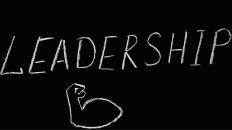The C-suite is constantly adapting to evolving market forces, technological leaps, and shifting business priorities. As we begin 2025, several powerful trends are poised to reshape the executive landscape, demanding a new breed of leadership equipped with diverse skill sets and future-forward mindsets. For organizations aiming to maintain a competitive edge, understanding these transformative shifts is paramount for effective C-suite recruitment and strategic succession planning.
Beyond the Balance Sheet
We’re observing a significant and accelerating trend: finance professionals are extending their sphere of influence into broader general management roles, including Chief Operating Officer (COO) and Managing Director positions. This isn’t merely about possessing sharp financial acumen; it’s about a strategic grasp of how financial instruments can fuel overall business expansion and operational excellence. Chief Financial Officers (CFOs) are increasingly showcasing their capacity to think strategically about market penetration, mergers and acquisitions (M&A) activities, and operational optimization, positioning them as prime candidates for expanded leadership responsibilities. This trend is set to intensify, with finance experts playing an increasingly pivotal role in charting the overall strategic direction of organizations.
Also read – Siemens India Promotes Shruti Malhotra as Head of Talent and Organisation
Strategic Return to Core Principles in a Digital World
While digital marketing remains an indispensable component, we’re witnessing a crucial recalibration within the marketing function. There’s a renewed emphasis on the bedrock principles of marketing – deeply understanding customer needs, crafting compelling brand narratives, and orchestrating meaningful customer experiences. This strategic shift doesn’t diminish the importance of digital channels; rather, it strategically integrates them within a more holistic and customer-centric marketing strategy. C-suite marketing leaders will require a robust understanding of both traditional and digital marketing, with a laser focus on data-driven decision-making and cultivating authentic customer relationships.
Forging a Unified Vision for Technology
The traditional demarcation between the Chief Information Officer (CIO) and Chief Technology Officer (CTO) roles is rapidly dissolving, culminating in a powerful convergence of responsibilities. As technology becomes intrinsically woven into every facet of business operations, a cohesive and unified vision for IT is no longer a luxury but a necessity. This signifies a fundamental shift away from viewing IT as a mere support function to recognizing it as a critical driver of innovation and business transformation. The future C-suite technology leader, often a Chief Technology and Information Officer (CTIO), will be tasked with not only maintaining a robust IT infrastructure but also spearheading digital transformation initiatives.
Companies will actively seek leaders with high emotional intelligence, empathy, and the proven ability to build trust, inspire their teams, and foster a sense of belonging, driving both individual and collective success.
The Rise of Giga Factories
The manufacturing sector is undergoing a profound transformation, propelled by the emergence of massive “gigafactories,” exemplified by pioneers like GE, and complex manufacturing methods currently being deployed by defence, semiconductor and electronics industries. These intricate operations demand exceptional project management acumen at the C-suite level. Leaders must be highly skilled at managing large-scale projects, orchestrating complex supply chains, and optimizing intricate production processes.
The Rise of the Purpose-Driven C-Suite
Increasingly, stakeholders—employees, customers, and investors—are prioritizing companies with a strong sense of purpose and a demonstrable commitment to social and environmental responsibility. This shift demands that C-suite leaders not only drive financial performance but also champion sustainability, social impact, and ethical business practices. Companies will seek executives who genuinely embody these values and can effectively communicate their organization’s purpose to all stakeholders, fostering trust and building long-term value.
Human-Centric Leadership
In an increasingly automated world, the human element of leadership becomes even more critical. C-suite leaders must prioritize employee well-being, cultivate a positive and inclusive company culture, and build high-performing teams that are resilient, adaptable and engaged. Companies will actively seek leaders with high emotional intelligence, empathy, and the proven ability to build trust, inspire their teams, and foster a sense of belonging, driving both individual and collective success.
These interwoven trends collectively illuminate the evolving and increasingly complex demands placed on C-suite leaders. In 2025 and beyond, successful organizations will require executives who are not only recognized experts within their specific domains but also possess a broad and strategic business perspective, exceptional critical thinking capabilities, the crucial adaptability needed to navigate an unpredictable business landscape, and importantly, a strong sense of purpose coupled with a human-centric approach to leadership. Consequently, C-suite recruitment strategies must prioritize these multifaceted qualities, focusing on identifying individuals who can drive innovation, foster seamless collaboration, embody purpose, prioritize people, and effectively lead their organizations toward a prosperous and sustainable future.
Stay connected with us on social media platforms for instant updates click here to join our LinkedIn, Twitter & Facebook





















